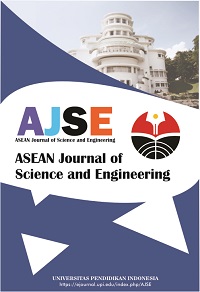Study and Review of Properties and Applications of Portland Pozzolana Cement
Abstract
Keywords
Full Text:
PDFReferences
Abdullah, A., Jaafar, M. S., Taufiq-Yap, Y. H., Alhozaimy, A., Al-Negheimish, A., and Noorzaei, J. (2012). The effect of various chemical activators on pozzolanic reactivity: A review. Scientific Research and Essays, 7(7), 719-729.
Adesina, A. (2020). Nanomaterials in cementitious composites: Review of durability performance. Journal of Building Pathology and Rehabilitation, 5(1), 1-9.
Hassan, E. M., Abdul-Wahab, S. A., Abdo, J., and Yetilmezsoy, K. (2019). Production of environmentally friendly cements using synthetic zeolite catalyst as the pozzolanic material. Clean Technologies and Environmental Policy, 21(9), 1829-1839.
Kirupa, J. P., and Sakthieswaran, N. (2015). Possible materials for producing Geopolymer concrete and its performance with and without Fibre addition-A State of the art review. International Journal of Civil and Structural Engineering, 5(3), 296-307.
Nawel, S., Mounir, L., and Hedi, H. (2020). Effect of temperature on pozzolanic reaction of Tunisian clays calcined in laboratory. SN Applied Sciences, 2(2), 1-14.
Nicoara, A. I., Stoica, A. E., Vrabec, M., Šmuc Rogan, N., Sturm, S., Ow-Yang, C., and Vasile, B. S. (2020). End-of-life materials used as supplementary cementitious materials in the concrete industry. Materials, 13(8), 1954.
Pal, P., and Gupta, G. (2020). A study on self compacting concrete using portland pozzolana cement. International Journal of Concrete Technology, 6(2), 1-9.
Pham, V. T., Meng, P., Bui, P. T., Ogawa, Y., and Kawai, K. (2020). Effects of shirasu natural pozzolan and limestone powder on the strength and aggressive chemical resistance of concrete. Construction and Building Materials, 239(2020), 117679.
Seleem, H. E. H., Rashad, A. M., and Elsokary, T. (2011). Effect of elevated temperature on physico-mechanical properties of blended cement concrete. Construction and building Materials, 25(2), 1009-1017.
Sivakrishna, A., Adesina, A., Awoyera, P. O., and Kumar, K. R. (2020). Green concrete: A review of recent developments. Materials Today: Proceedings, 27(2020), 54-58.
Wong, J. K. H., Kok, S. T., and Wong, S. Y. (2020). Cementitious, pozzolanic and filler materials for DSM binders. Civil Engineering Journal, 6(2), 402-417.
DOI: https://doi.org/10.17509/ajse.v1i1.37980
Refbacks
- There are currently no refbacks.
Copyright (c) 2021 Universitas Pendidikan Indonesia

This work is licensed under a Creative Commons Attribution-ShareAlike 4.0 International License.












